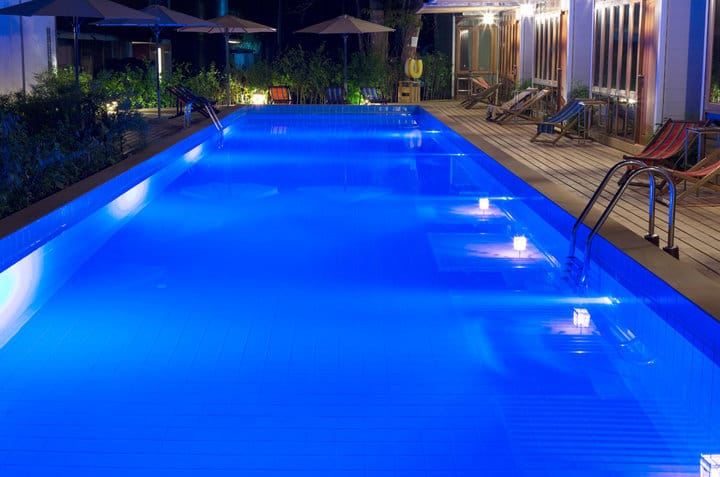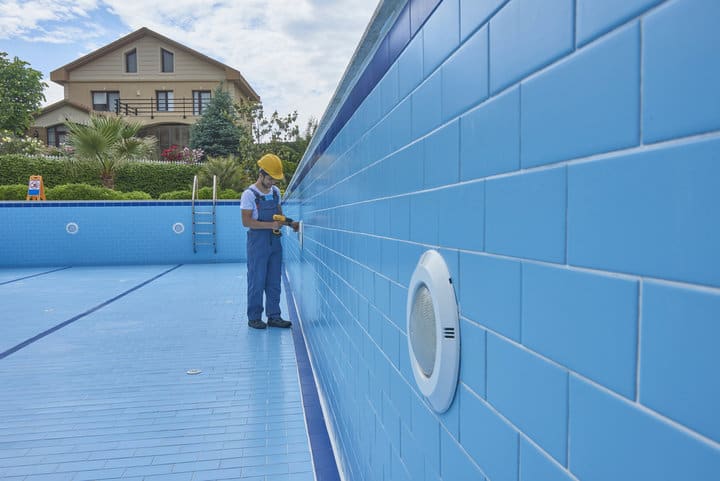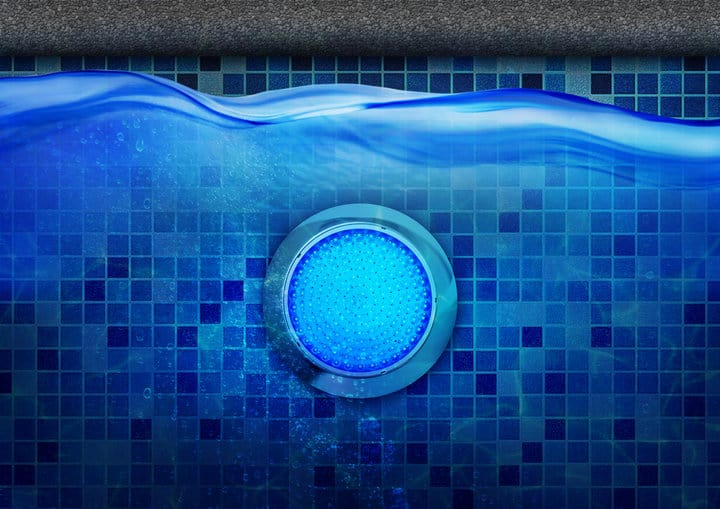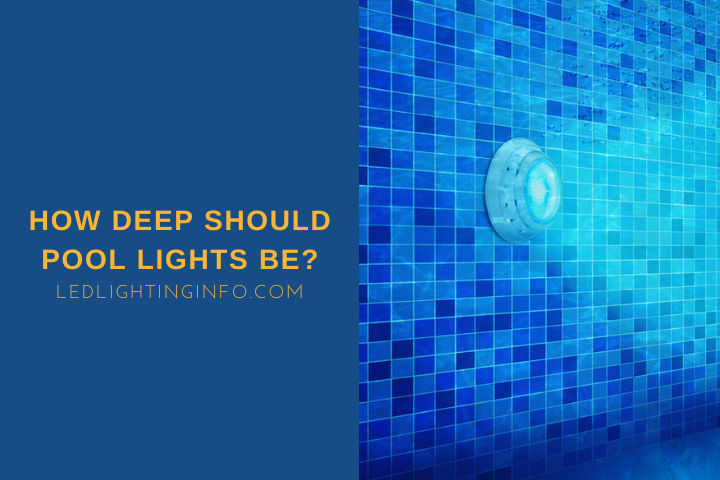Installing pool lights is a job you’ll want to get right the first time.
Some parts will be trial and error, but the actual placement of lights is not something you want to redo again and again.
Wiring pool lights is hardly a simple job, so if you can get them in the right place the first time, then you’ll be much happier.
One of the questions you need to consider is how deep they should be and why.
Pool lights must be placed between 4 and 18 inches below the water surface. Regulations state that they must be reachable and removable from the pool without needing to enter the water. Lights that are too close to the surface won’t cool properly and could cause other hazards.
Let’s get into this a little more by taking a look at:
- Where to place pool lights – including depth
- Whether pool lights should face the house
- Why pool lights must be submerged
What Should Be The Depth Of Pool Lights?

When deciding where to place your pool lights, the main things you need to consider are the shape and orientation of the pool and how easy it will be to access them.
In terms of shape, most pools are rectangular, and the best option is to have the lights along one of the longer sides.
You could place a single light at each end of a rectangular pool, but this won’t have an even glow and will look less appealing.
The best thing to do for other pool shapes is to consult a lighting design guide.
Lighting manufacturers put these together with recommendations on the best lighting for different shapes.
This Jandy lighting guide covers oval pools, angled pools and more.
In terms of depth, the optimum depth is between 9 inches and 18 inches.
This means that the light will be close enough to the water surface that you can easily maintain, but also deep enough to avoid causing random reflections from the water surface or cooling issues – the lights should permanently be submerged.
The job of your pool lights is to illuminate the pool itself, not just the water. Having the lights too deep means that you may need more light to properly define the pool edge.
When you want to maintain your lights, you need to make sure you can remove them from the pool without severing the wiring.
If they’re too deep, you will need a serious amount of wiring hidden behind the fixture to allow you to remove it from the pool.
So between 9 and 18 inches gives you a good balance – they’re reachable and will illuminate the pool edge, but you won’t have problems with the light shining above the surface either.
Are There Any Pool Lights Regulations?

The depth of pool lights is regulated depending on where you live.
In the US, you need to refer to the National Electrical Code (NEC) regulations.
Specifically, Article 680 discusses pool electrical regulations, with section 680.23 addressing pool lights.
There are regulations around the depth – it states that they must be installed between 4 inches and 18 inches from the normal water level.
Other regulations include the length of the cord for the light and the fact that all lights must have GFCI protection.
Do Pool Lights Always Need To Be Submerged?

The minimum depth of 4 inches is because pool lights are designed to be constantly submerged.
There are two reasons for this – one of which is more serious.
Dealing with the less serious one first, water is reflective, and if you have the light on or close to the surface, it’s going to cause a lot of light reflection as the pool surface rises and falls when you’re swimming.
It will be less attractive and could cause glare issues as the water bounces off the surface.
But the more severe problem is how those pool lights are designed to work long-term.
Lights require cooling – otherwise, the bulbs will overheat and become faulty, or at the very least drastically reduce their lifespan.
Water is a highly effective thermal conductor – and so, when pool lights were designed, a clever step was taken so that the pool water acts as your heat dissipation method.
Because why install fancy heat sinks when you have a massive body of water that can draw the high temperatures away from the bulb instead?
Plus, it takes a minuscule amount of work away from any pool heater you’re using. Though, lights on their own won’t affect the water temperature.
So, if you don’t keep your pool lights submerged, they are going to overheat, and that’s going to damage them.
Read more: Can Pool Lights Electrocute You?
Final Words
The depth of pool lights is a reasonably standardized measurement since regulations dictate you have to install them between 4 and 18 inches below the water surface.
Most experts recommend a distance of 9-18 inches, so there’s little leeway when deciding.
Installing your lights at this depth is the safest way to illuminate your pool while ensuring they keep working without overheating.
Do you have any unusual pool lighting setups at home? Or is your pool a less common shape, with lighting effectively proving challenging?

